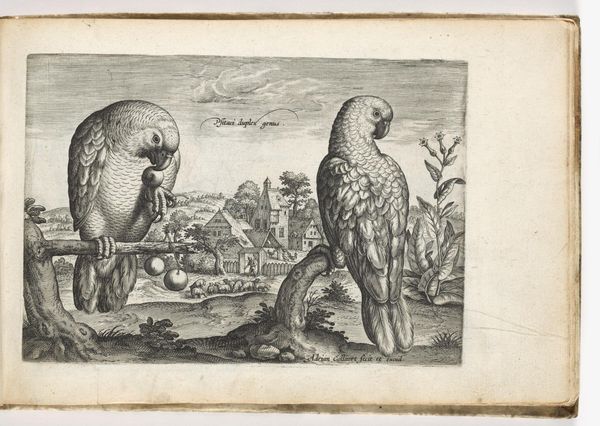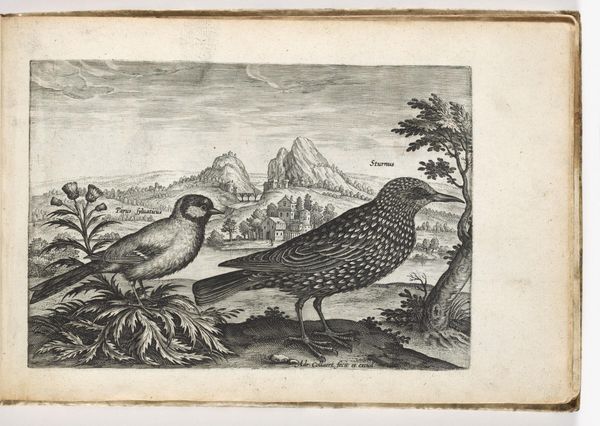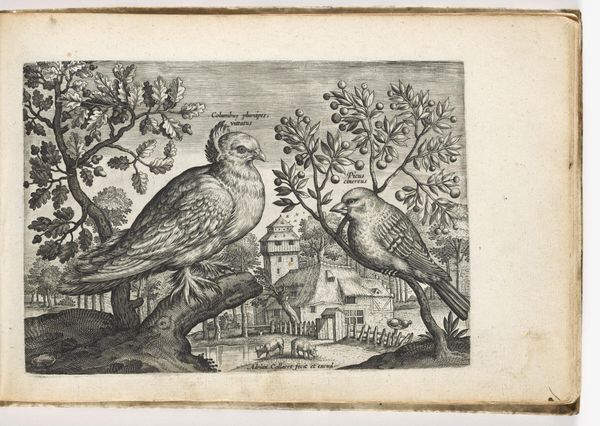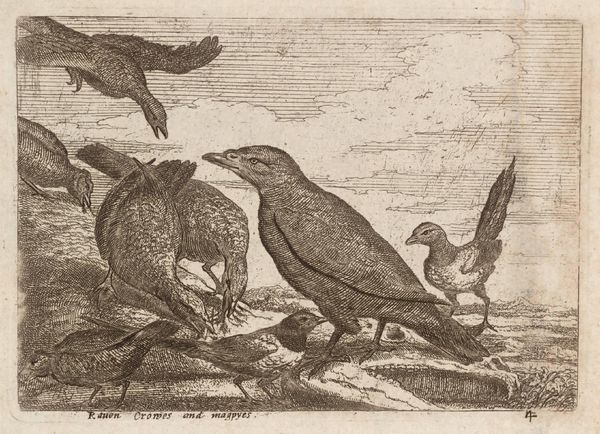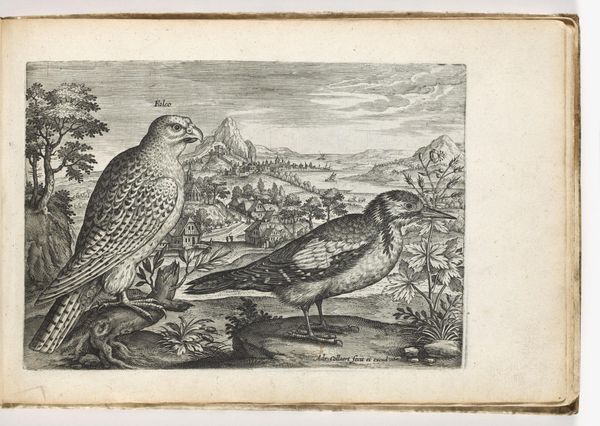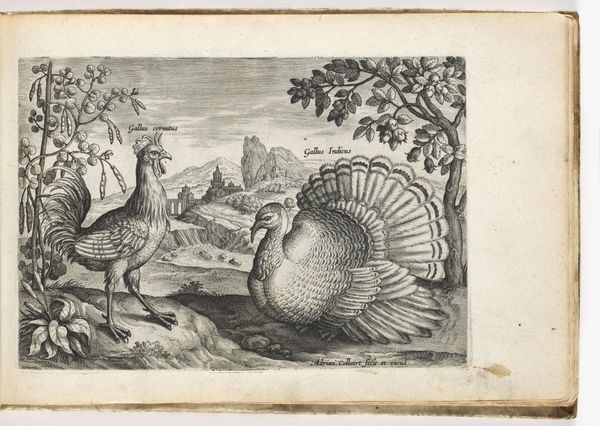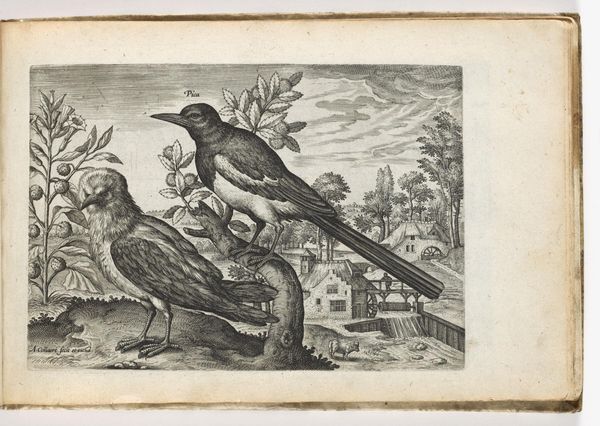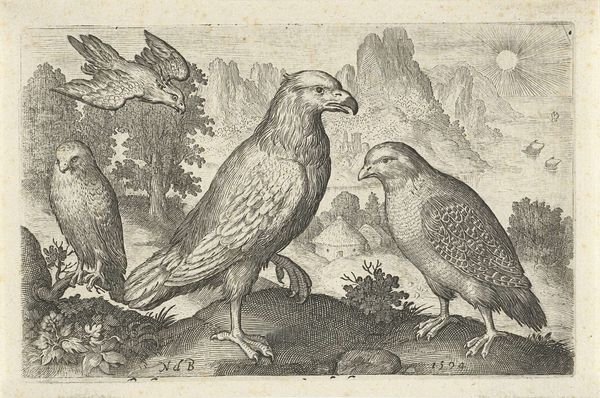
print, etching
# print
#
etching
#
landscape
#
genre-painting
#
northern-renaissance
Dimensions: height 98 mm, width 132 mm
Copyright: Rijks Museum: Open Domain
Johann Hogenberg created this print featuring flowers and animals in a landscape. The composition is dominated by two birds: a hoopoe and a parrot. In classical antiquity, the hoopoe was associated with transformation. Ovid tells of Tereus's wife, Procne, transformed into a hoopoe after serving her son to Tereus. The parrot, traditionally a symbol of mimicry and exoticism, is here depicted perched on a quince tree. The quince itself, belonging to the genus "malus," evokes the forbidden fruit of Eden, a symbol of temptation and knowledge. The parrot with the quince creates a visual tension between innocence and the fall from grace. These symbols are not static; they evolve across time. The hoopoe, once a symbol of tragic transformation, reappears in different guises, each time carrying echoes of its past. This cyclical return highlights the emotional power embedded in visual symbols, engaging us on a subconscious level. It's a journey through cultural memory, where the past continually resurfaces.
Comments
rijksmuseum about 2 years ago
⋮
In making his representations of flowers and animals Hogenberg borrowed freely from prints by other artists. Some combinations are endearing, others slightly bizarre. What does a polar bear have to do with artichokes? It is precisely the series’ mixture of originality and naiveté that is so appealing to modern eyes.
Join the conversation
Join millions of artists and users on Artera today and experience the ultimate creative platform.
